Yes, there are winter bees! These remarkable creatures are a special caste of honey bees born in late summer, specifically designed to help their colony survive the harsh winter months. Let’s explore what makes winter bees unique and how they contribute to the survival of their hive during the cold season.
Be sure to check out the photos at the end of the blog! (CLICK)

When Do Winter Bees Appear?
Winter bees are born in late summer, typically around August or September. As the days shorten and temperatures begin to drop, the queen bee slows her egg-laying and focuses on producing these resilient winter bees. This strategic timing ensures that the colony has enough workers to survive until spring.
How Are Winter Bees Different?
Winter bees are physiologically distinct from their summer counterparts. Here are some key differences:
- Lifespan: While summer bees generally live for about six weeks, winter bees can live up to six months. This extended lifespan is crucial for maintaining the colony through the winter.
- Thermoregulation: One of the primary roles of winter bees is to keep the hive warm. They cluster together around the queen and use their body vibrations to generate heat, maintaining a cozy environment within the hive, even in freezing temperatures.
- Fat Bodies: Winter bees have larger fat bodies that store essential nutrients and proteins. This adaptation allows them to regulate their metabolism and conserve energy during periods when foraging is impossible.
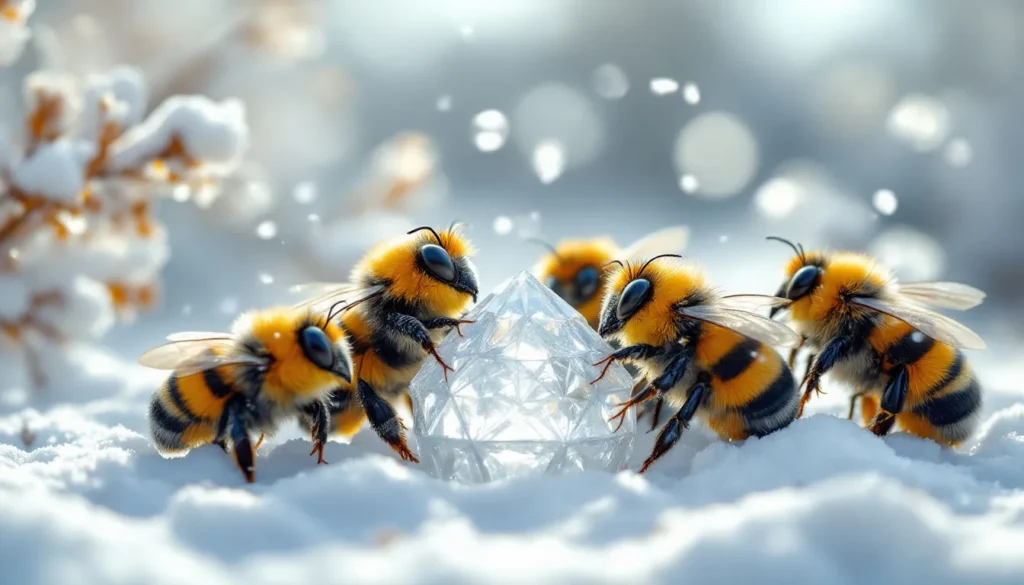
The Role of Winter Bees
Winter bees play a vital role in ensuring the survival of their colony. They are responsible for incubating any remaining brood (young bees) and maintaining hive temperature. By clustering together, they create a protective environment that allows them to consume stored honey and sustain themselves until warmer weather returns.
Supporting Winter Bees
To help winter-active bumblebees, it’s essential to provide them with nectar sources from winter-flowering plants. Some great options include:
- Mahonia
- Evergreen clematis
- Winter-flowering heather
- Winter aconite
- Hellebores
- Winter honeysuckle
By planting these flowers, you can support not only winter bees but also other pollinators that may be active during the colder months.
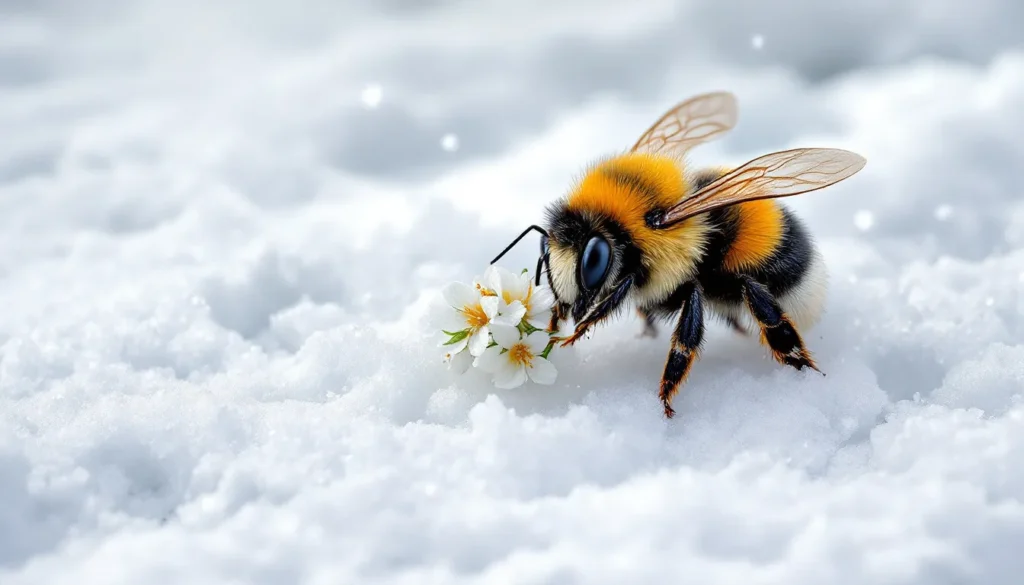
Winter Survival Strategies of Different Bee Species
As winter approaches, various bee species employ fascinating strategies to survive the harsh cold. Let’s explore how these remarkable insects adapt to winter conditions:
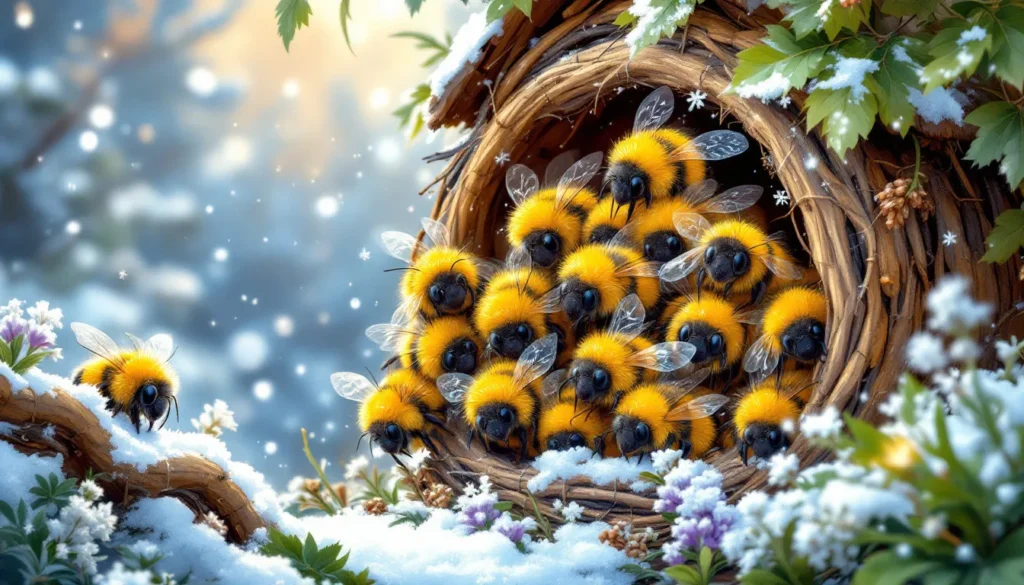
Honey Bees: The Cluster Warmth
Honey bees form a tight cluster inside their hive during winter, with the queen at the center. Worker bees vibrate their flight muscles to generate heat, maintaining the cluster’s core temperature at around 90-100°F. They rotate positions to ensure all bees stay warm, consuming stored honey for energy. Unlike other bee species, honey bee colonies remain active throughout winter, requiring substantial food reserves. Learn more about honey bee winter behavior at Buddha Bee Apiary and Best Bees.
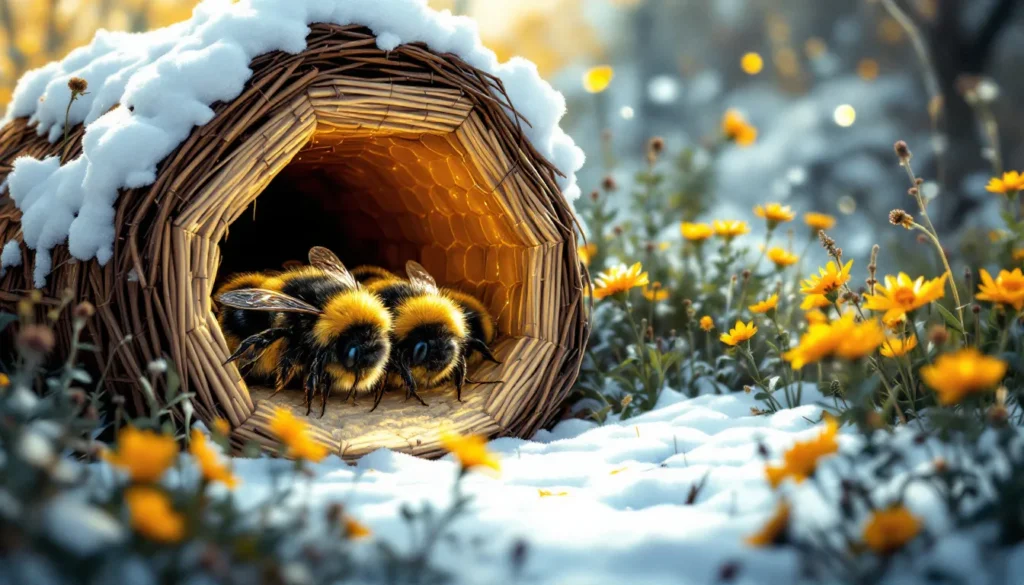
Bumble Bees: The Hibernating Queens
In bumble bee colonies, only newly-mated queens survive the winter. According to the Xerces Society, these queens hibernate from autumn until spring, typically emerging in late March or early April. Before hibernation, queens gorge on nectar and pollen to build up fat stores. They then find sheltered spots underground, in loose soil, or even in flowerpots to spend the winter months. This strategy allows them to conserve energy and survive without the need for large honey stores.
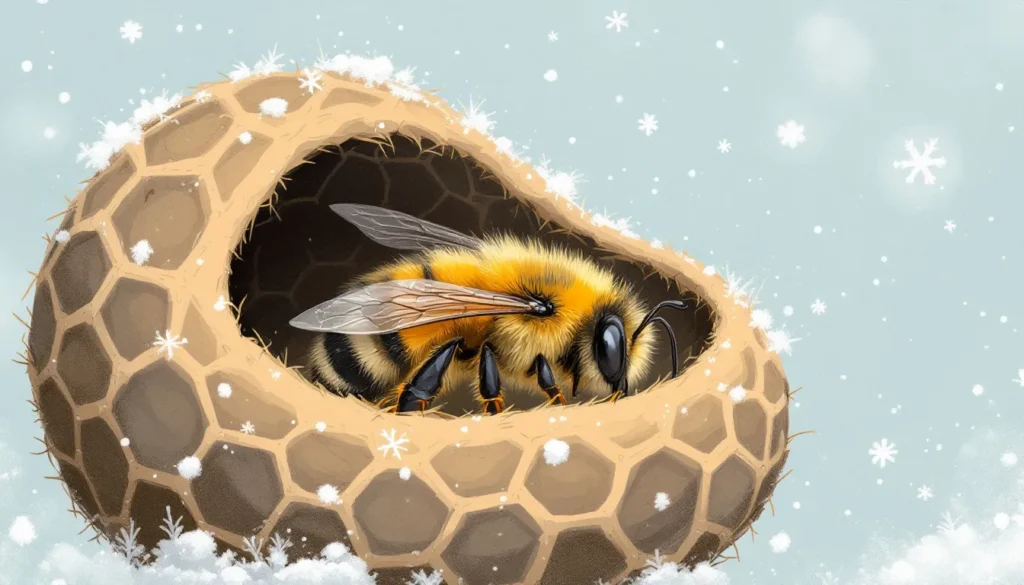
Solitary Bees: Snug in Their Nests
Many solitary bee species, such as mason bees and mining bees, overwinter as fully formed adults within their nests. The Woodland Trust explains that these bees develop from eggs laid in spring, feeding on pollen left by their mothers. By autumn, they’ve matured into adult bees but remain in their cocoons until the following spring. This method protects them from harsh winter conditions while ensuring they’re ready to emerge when their preferred flowers bloom.

Carpenter Bees: Wooden Hibernation Chambers
Carpenter bees create tunnels in wood where they spend the winter. The female bees hibernate in these galleries, which offer insulation from cold temperatures. Interestingly, Hanna’s Bees notes that some species, like the blue carpenter bee, overwinter as adults in bramble stems, showcasing the diversity of survival strategies even within similar bee types.
By understanding these diverse overwintering strategies, we can better appreciate the resilience of bees and their importance in our ecosystems year-round. As climate change affects seasonal patterns, it’s crucial to support these pollinators by providing suitable habitats and food sources throughout the year.
Conclusion
Winter bees are an incredible example of nature’s adaptability. Their unique physiological traits and behaviors ensure that honey bee colonies can withstand harsh winters and emerge healthy in the spring. Understanding and supporting these remarkable insects is crucial for maintaining healthy bee populations.
If you’re interested in learning more about how to support winter bees or want to explore eco-friendly products that benefit pollinators, check out our Bloomer Store Discount Code for special offers on products that help promote a healthier environment!
Photo Collection
I gathered some photos I felt you guys might enjoy!
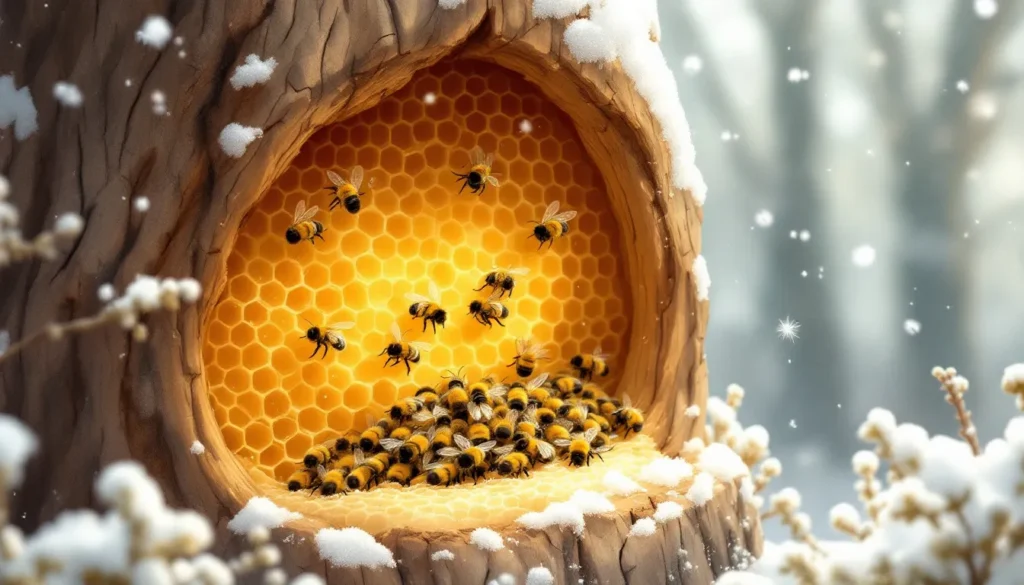
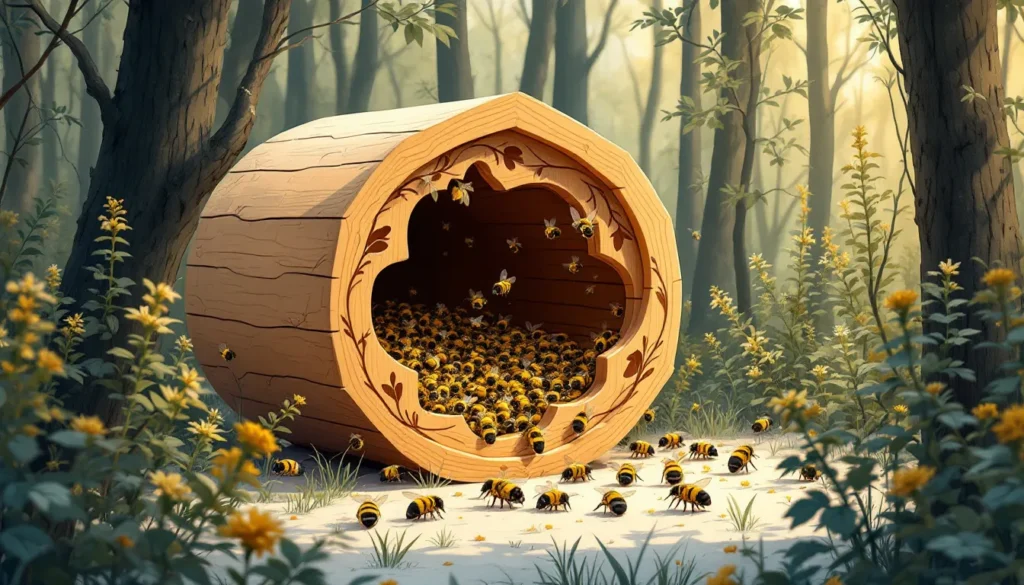
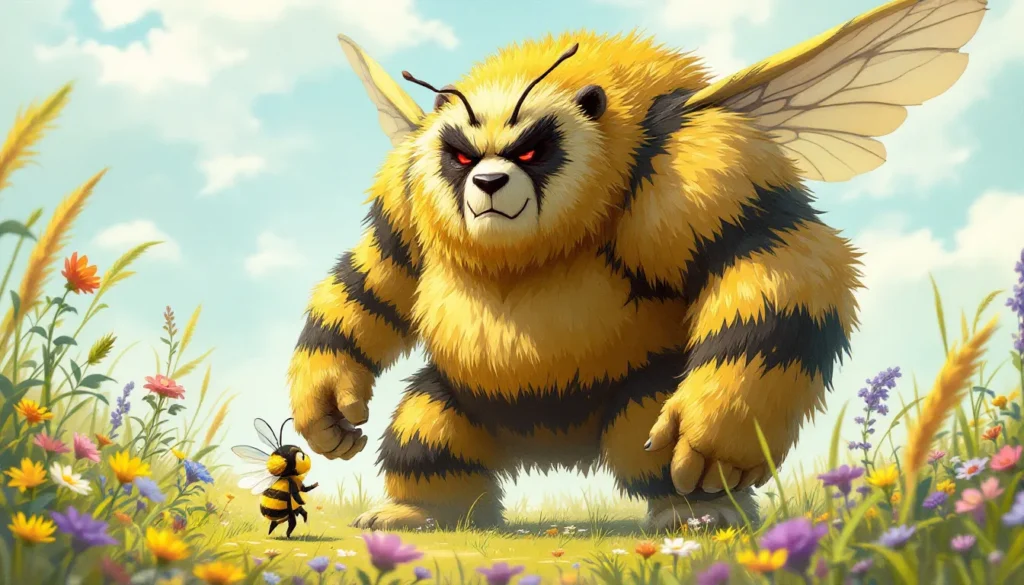
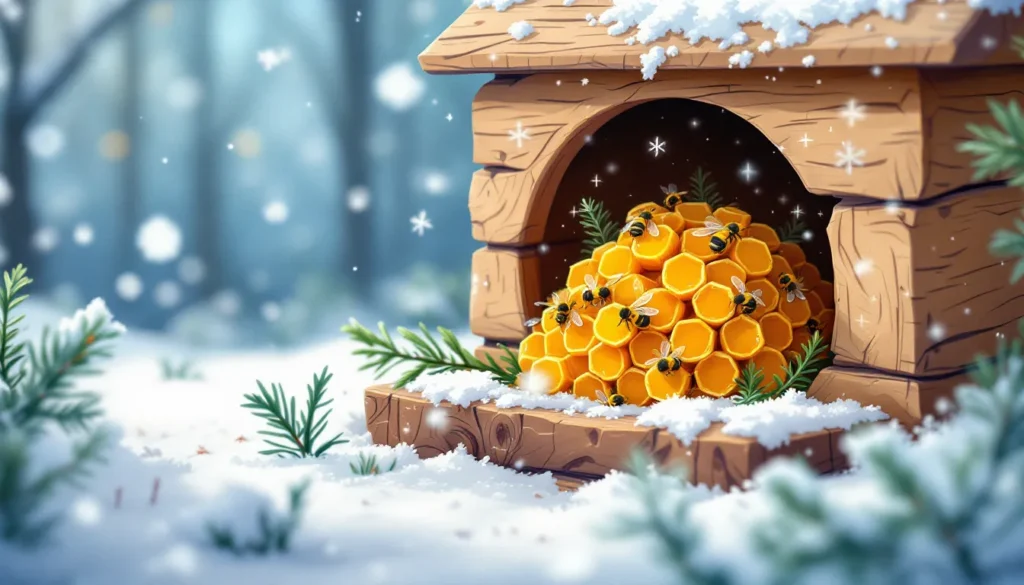
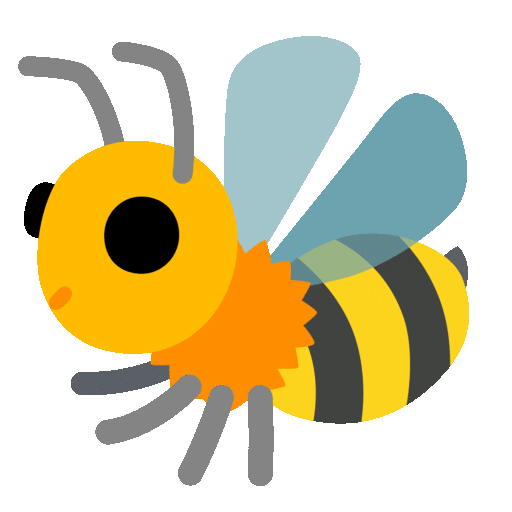



2 Comments
Edwin Skine · December 9, 2024 at 8:32 pm
I have been browsing on-line greater than three hours nowadays, yet
I by no means found any attention-grabbing article like yours.
It’s beautiful price sufficient for me. In my opinion, if all website owners and bloggers made good content material as you probably did,
the internet will likely be much more useful than ever before.
The Bumble Bee Breakthrough: Ecosystem Heroes and Pollination Powerhouses - Ambassador Bloomer · November 26, 2024 at 7:30 am
[…] Discover how these remarkable insects survive the cold months and play a crucial role in their colonies. While bumble bees thrive in warmer seasons, winter bees ensure the survival of their hives through innovative adaptations. Click here to read our blog: ARE THERE WINTER BEES? […]